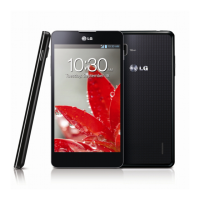Index 185
the weight of scientific evidence does not show an association between exposure to
radiofrequency (RF) from cell phones and adverse health outcomes. Still the scientific
community does recommend conducting additional research to address gaps in knowledge.
That research is being conducted around the world and FDA continues to monitor developments
” in the
subject index, select Cell Phones > Research). You can also contact the FDA toll-free at (888)
463-6332 or (888) INFO-FDA. In June 2000, the FDA entered into a cooperative research and
development agreement through which additional scientific research is being conducted. The
ves
that wireless phone usage can lead to cancer or a variety of other problems, including
headaches, dizziness or memory loss.” This publication is available at http://www.fcc.gov/cgb/
cellular.html or through the FCC at (888) 225-5322 or (888) CALL-FCC.
What does SAR” mean?
In 1996, the FCC, working with the FDA, the U.S. Environmental Protection Agency, and other
agencies, established RF exposure safety guidelines for wireless phones in the United States.
Before a wireless phone model is available for sale to the public, it must be tested by the
manufacturer and certified to the FCC that it does not exceed limits established by the FCC.
”SAR is a measure of
the rate of absorption of RF energy in the body. Tests for SAR are conducted with the phone
transmitting at its highest power level in all tested frequency bands. Since 1996, the FCC has
required that the SAR of handheld wireless phones not exceed 1.6 watts per kilogram, averaged
over one gram of tissue. Although the SAR is determined at the highest power level, the actual
SAR value of a wireless phone while operating can be less than the reported SAR value. This is
because the SAR value may vary from call to call, depending on factors such as proximity to a
cell site, the proximity of the phone to the body while in use, and the use of hands-free devices.
http://www.fcc.gov/Bureaus/Engineering_Technology/Doc uments/bulletins or visit the Cellular
Telecommunications Industry Association website at
http://www.ctia.org/consumer_info/index.cfm/AID/10371 . You may also wish to contact the
manufacturer of your phone.
Can I minimize my RF exposure?
If you are concerned about RF, there are several simple steps you can take to minimize your RF
exposure. You can, of course, reduce your talk time. You can place more distance between
your body and the source of the RF, as the exposure level drops off dramatically with distance.
-free kits can be used with wireless phones for
convenience and comfort. These systems reduce the absorption of RF energy in the head
because the phone, which is the source of the RF emissions, will not be placed against the
head. On the other hand, if the phone is mounted against the waist or other part of the body
during use, then that part of the body will absorb more RF energy. Wireless phones marketed in
the U.S. are required to meet safety requirements regardless of whether they are used against

